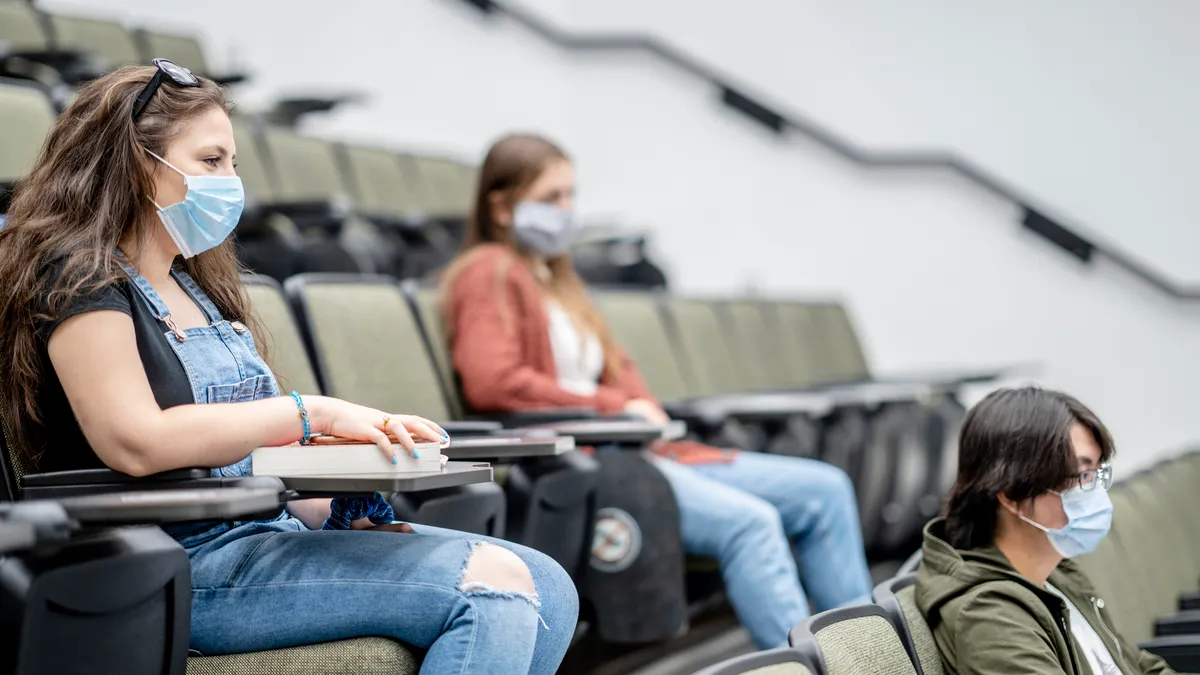Dive Brief:
- Starting the fall term with in-person classes is linked to a significant uptick in coronavirus cases locally while beginning remotely is tied to a decrease, according to recent research from the Centers for Disease Control and Prevention.
- The study compared COVID-19 transmission in counties with large colleges or universities that began the term with in-person classes and those where classes started online.
- The CDC suggests additional virus mitigation tactics at colleges could help reduce transmission. Many schools have said they are planning for more robust testing this fall.
Dive Insight:
Counties in which large colleges and universities began the term in-person recorded a 56% increase in COVID-19 cases between 21-day periods before and after classes started. Meanwhile, counties in which such institutions kicked off with online classes saw an 18% decrease in cases. Counties without large institutions had a 6% decline.
Many schools that brought students back to campus tested them for the virus or required them to arrive with a negative test. But the CDC doesn't attribute that alone to the uptick in cases in counties where colleges began classes face-to-face. It cites an increase in the number and share of positive tests during the periods tracked as an indication transmission was also higher.
The authors note that COVID-19 cases, hotspots, testing and test positivity all rose in the counties studied where universities had in-person classes. Of the overall sample, 22 counties were in the in-person-start group, while 79 were in the online-start group, and 3,009 had no large institution.
A few factors could have influenced the data, the CDC notes. Many schools switched instructional modes in the first few weeks of the term, for instance. Also, the study didn't consider state and local virus mitigation strategies such as mask-wearing and social distancing requirements.
Several large universities bringing students to campus this spring say they plan to step up testing protocols, but that can be a costly endeavor.
The American College Health Association most recently recommended schools test students and employees for the virus twice a week, in addition to following other COVID-19 safety measures. A study published last summer suggested colleges may need to test students for the virus every two days in order to contain outbreaks while adhering to protocols designed to reduce transmission.
This isn't the first study to draw connections between coronavirus cases and colleges. Cases climbed among adults ages 18 to 22 from August to September, the CDC found. Another study — which at the time of publication had not been peer-reviewed — said more than 3,000 new cases daily could be linked to colleges having in-person classes.















